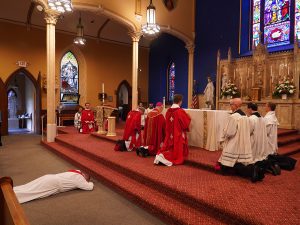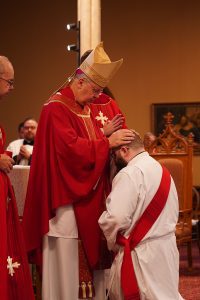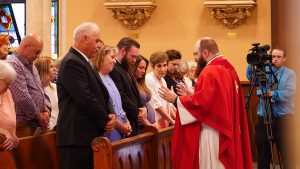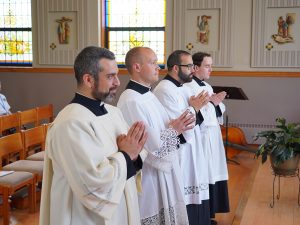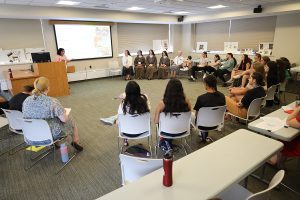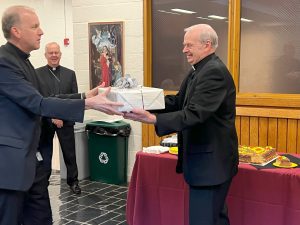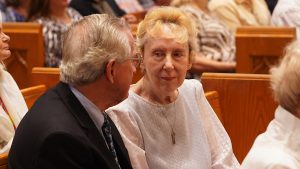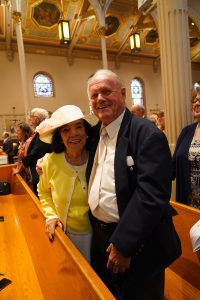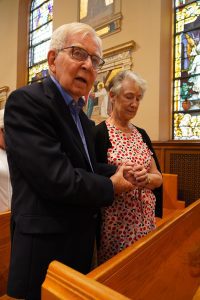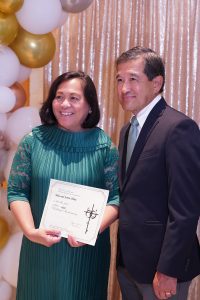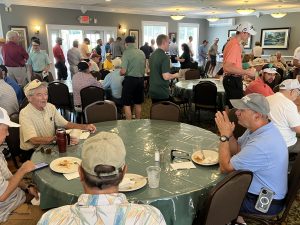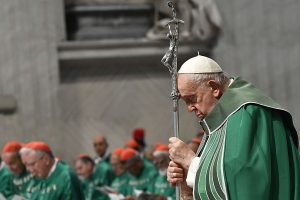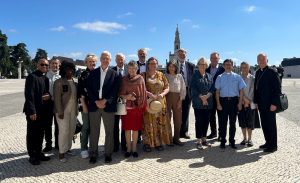
LISBON, Portgual – The Most Rev. Joseph C. Bambera, Bishop of Scranton, once again co-chaired the Catholic-Pentecostal International Dialogue, which met at the Center of Spirituality, Alfragide, from July 6-12, 2024.
This dialogue began in 1972 and is co-sponsored by the Catholic Church’s Dicastery for Promoting Christian Unity (DPCU) and the Pentecostal World Fellowship’s Christian Unity Commission.
The primary goal of this dialogue is to promote mutual respect and understanding between the Catholic Church and Classical Pentecostal leaders and churches.
All participants are convinced that Christian unity is the will of Christ. In the context of the general theme, Lex orandi, lex credendi, the fourth annual session discussed “Sacramentality and Christian Living.”
Dr. Jean-Daniel Plüss presented the Pentecostal paper, “Conformed to the Image of Christ: Pentecostal Spirituality, Sacramental Practices and Daily Living.”
Rev. Fr. Marcial Maçaneiro, S.C.J., presented the Catholic paper, “The Sacraments and Sacramental Life: A Catholic Perspective.”
Morning and evening prayers, led alternately by the participants, were also essential for the work together.
A visit to “Our Lady of Fatima Shrine,” where the participants attended Sunday Eucharist at the main square, was an occasion for exchange, dialogue, clarification, and reflection. It significantly marked this session in light of the topic discussed: the devoted expressions of many pilgrims impacted the participants, who saw in them a hunger for God and a confidence in God’s action.
At the end of the meeting, Bishop Joseph Bambera, Catholic Co-Chair, described the session as follows: “This year’s dialogue has once again affirmed what Pope Francis noted in reflecting upon the upcoming 1700th anniversary of the First Council of Nicaea, ‘Jesus Christ is the heart of ecumenism … and our mission is to bear witness to him.’ Our discussions, while candid and probing, reflect a depth of mutual respect, understanding and fellowship that emerges from shared faith in Jesus. These days continue to be a blessing to us all as we journey together as brothers and sisters in the Lord.”
Rev. Dr. Cecil M. Robeck, Jr., Pentecostal Co-Chair, affirmed: “After 52 years of dialogue together, we continue to be encouraged as we gain new insight and knowledge of one another. Our visit to Fatima highlighted our discussion on the sacramental life of the Church. We are still discovering how much we hold in common, which leads us to greater love and appreciation for the unique gifts that we bring on the same issues. It has been a rich time of giving and receiving these gifts.”
All participants benefitted greatly from the shared meals, conversations, and fellowship together.
The members from the Classical Pentecostal churches are: Rev. Cecil M. Robeck Jr., Fuller Theological Seminary, Pasadena, CA, USA (Assemblies of God), Co-Chair; Rev. David Cole, Liaison to the Greater Christian Community for the Pentecostal/Charismatic Churches of North America, Professor of Historical Theology, The King’s University, Southlake, TX, USA (Open Bible Churches), Co-Secretary; Rev. Marcia Clarke, Pastor, Vanguard University, London School of Theology, Los Angeles, USA/UK (Church of God, Cleveland, TN); Rev. Dale M. Coulter, Professor of Historical Theology, Pentecostal Theological Seminary (Church of God, Cleveland, TN); Rev. Jacqueline Grey, Professor of Biblical Studies, Alphacrucis University College, Australia (Australian Christian Churches); Rev. Opoku Onyinah, Former Chairman of the Church of Pentecost, Ghana; Rev. David Wells, Vice-Chair of the Pentecostal World Fellowship, (General Superintendent of the Pentecostal Assemblies of Canada); Rev. Pedro Manuel López Castillo, Co-Coordinator, Pentecostal Fraternity (Assemblies of God of Peru), (unable to attend); and Rev. S. David Moore, Professor of Pneumatology, The King’s University, South Lake, TX, USA (International Church of the Foursquare Gospel), (unable to attend). Dr. Jean-Daniel Plüss (Pentecostal Assemblies of Switzerland) was the author of the Pentecostal paper.
The members of the Catholic team are: Most Reverend Joseph Bambera, Bishop of Scranton, PA, USA, Co-Chair; Rev. Msgr. Juan Usma Gómez, Bureau Chief of Western Section, Dicastery for Promoting Christian Unity, Vatican City/Colombia, Co-Secretary; Rev. Lawrence Iwuamadi, Catholic Professor, Ecumenical Institute at Bossey, Switzerland/Nigeria; Sr. Maria Ha Fong Ko, F.M.A., Professor, Holy Spirit Seminary, Hong Kong, China; Rev. Marcial Maçaneiro, S.C.J., Professor, Pontifical Catholic University of Paraná, Brazil; and Dr. Teresa Francesca Rossi, Co-Director, Centro Pro Unione and Professor, Pontifical University of Saint Thomas Aquinas, Rome, Italy; Dr. Mary Healy, Professor, Sacred Heart Major Seminary, Detroit, MI, USA, (unable to attend).

